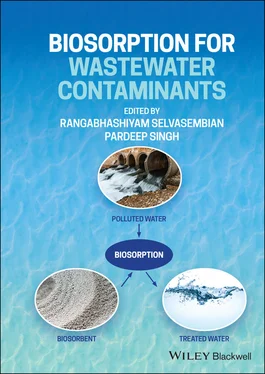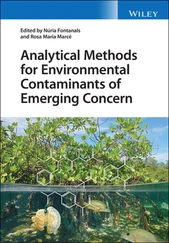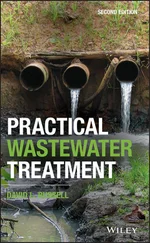1 Cover
2 Title Page
3 Copyright Page
4 List of Contributors
5 Preface
6 Foreword
7 1 Industrial Wastewater Contaminants and Their Hazardous Impacts Introduction Toxic Heavy Metals Dyes Oil and Grease Biocides Organic Compounds Contaminants of Emerging Concern (CECs) Conclusion References
8 2 Biosorption and Different Native Sources for Preparation of Biosorbents Introduction Biosorption and Its Mechanism Biosorbents Biocomposites Alteration of Biosorbents Cost Evaluation Conclusion References
9 3 Biosorption for Eliminating Inorganic Contaminants(IOCs) from Wastewater Introduction: Water Pollution by Inorganic Contaminants (IOCs) Permissible Limits and Sources of IOCs in Water Systems Sources of IOCs in Water Systems IOCs in Water: Environmental and Health Hazards Elimination of IOCs from Wastewater: Recent Strategies and Remediation Techniques Sorption Methods Biosorption Methods for Eliminating IOCs from Wastewater Concluding Remarks and Future Perspectives References
10 4 Biosorption for Eliminating Organic Contaminants from Wastewater Introduction Types of Organic Pollutants and Their Effects on Human Health Remediation Methods for Eliminating Organic Contaminants from Wastewater Conclusion and Future Prospects References
11 5 Recent Approaches in the Preparation of Various Biosorbents Introduction Biosorbents Physical Treatment of Biosorbents Chemical Treatment of Biosorbents Challenges in the Utilization of Biosorbents Conclusion References
12 6 Characterization of the Biosorption Process Introduction Biosorption Characterization Methods Conclusion References
13 7 Isotherm and Kinetic Modeling Analysis of Water Decontamination through Biosorption Adsorption Equilibrium Analysis Adsorption Kinetics Sorption Diffusion Models References
14 8 Dynamic Biosorption for Removal of Wastewater Contaminants Introduction Fundamentals of Biosorption Challenges in Dynamic Biosorption Conclusion References
15 9 Applications of Electrospun Membranes Immobilized with Biosorbents for the Removal of Contaminants Introduction Electrospinning Electrospun Biosorbent Membranes Conclusion References
16 10 Biosorption of Precious Metals from Wastewater Introduction Outline of Treatment Methods Biosorbents Factors Affecting Biosorption Biosorption Equilibrium Models Desorption and Recovery Continuous Biosorption Utilization of Industrial Discharge/Wastes for Biosorption Conclusions References
17 11 Biosorption as a Strategy for the Recovery of RareEarth Elements Rare Earth Elements (REEs) Methods to Recover Rare Earth Elements Biosorption Approach for Recovering Rare Earth Elements Final Considerations References
18 12 Deployment of Used Biosorbents in Environmental Remediation: Prospects and Challenges Introduction Mechanism Studies Recovery of Metals through Used Biosorbents Adsorption Kinetics Current Challenges Conclusion Summary References
19 13 Removal of Hexavalent Chromium from Aqueous Media Using Eco‐Friendly and Cost‐Effective Biological Methods Introduction Sources of Hexavalent Chromium Toxicity of Hexavalent Chromium Removal of Hexavalent Chromium Ions Adsorption Kinetic Studies Adsorption Isotherm Studies Thermodynamics Studies Conclusion Acknowledgments References
20 14 Biosorption of Arsenic from Wastewater Introduction Sources of Arsenic in Groundwater Pollution Effect of Arsenic on the Environment and Human Health Methods for Removing Arsenic from Wastewater Biosorption of Arsenic from Wastewater Summary Acknowledgments References
21 Index
22 End User License Agreement
1 Chapter 1 Table 1.1 Examples of biocides, activities where they are employed, and the... Table 1.2 Classification of organic pollutants by WHO. Table 1.3 Listing of persistent organic compounds according to the Stockhol... Table 1.4 Classification of some CECs such as PPCPs, EDCs, FRs, pesticides,...
2 Chapter 2 Table 2.1 Biosorption of heavy metals by different bacteria. Table 2.2 Biosorption of heavy metals by different algae. Table 2.3 Biosorption of heavy metals by different fungi. Table 2.4 Biosorption of heavy metals by different yeasts. Table 2.5 Biosorption of heavy metals by different plant materials. Table 2.6 Biosorption of heavy metals by different animal wastes.
3 Chapter 3 Table 3.1 The acceptable limits of some IOCs in drinking water as per BIS g...Table 3.2 Some recently reported biosorbents for eliminating IOCs from wast...
4 Chapter 4Table 4.1 Pharmaceutical active compounds (PACs) traced in surface water.Table 4.2 Sources and hazards of organic contaminants.Table 4.3 Biosorbents and their performance.
5 Chapter 5Table 5.1 Biosorptive performances of biosorbents with physical and chemica...
6 Chapter 6Table 6.1 FTIR spectra of biomaterials.
7 Chapter 7Table 7.1 Reported maximum biosorption capacities for different adsorbents ...Table 7.2 The Langmuir separation factor.Table 7.3 Comparison of maximum biosorption capacities and kinetic rate con...
8 Chapter 8Table 8.1 Comparison of batch and continuous flow operations.Table 8.2 Biosorptive removal of contaminants or pollutants from wastewater...Table 8.3 Column biosorption models.
9 Chapter 9Table 9.1 Factors affecting the morphology and structure of electrospun nan...
10 Chapter 10Table 10.1 Improved procedures for removal of costly metals.Table 10.2 Conventional methods for recovery of precious metals.Table 10.3 Biomaterials employed as biosorbents.Table 10.4 Processes and techniques for the improvement of precious metals
11 Chapter 11Table 11.1 Chemical characteristics of the rare earth elements.Table 11.2 Commercial and full names of solvents used for REE recovery.
12 Chapter 12Table 12.1 Biosorption of heavy metals by various microbial masses.Table 12.2 Intracellular sequestration of metals by various microbes.Table 12.3 Bioleaching of heavy metals with bioremediation agents.Table 12.4 Advances in multi‐metal removal by various biosorbents.Table 12.5 Kinetic models and their expressions.Table 12.6 Adsorption isotherms and their expressions.Table 12.7 Thermodynamic expressions for Gibbs free energy change.
13 Chapter 13Table 13.1 Industries and Cr (VI) concentrations in their effluents.Table 13.2 Biosorption capacity of biosorbents derived from algal, fungal, ...Table 13.3 Microorganisms and their Cr (VI) efficiency.
1 Chapter 1 Figure 1.1 Main industries dealing with dyes. Figure 1.2 Prontosil and its reduction products.
2 Chapter 4Figure 4.1 Structure of some synthetic dye molecules.Figure 4.2 Proposed mechanism for bioadsorbents and bioadsorbates.
3 Chapter 6Figure 6.1 Fourier transforms infrared spectroscopy.Figure 6.2 Scanning electron microscope attached to anenergy dispersive spec...Figure 6.3 X‐ray photoelectron spectroscopy.Figure 6.4 X‐ray diffraction analysis.Figure 6.5 Brunauer–Emmett–Teller Analyzer.Figure 6.6 Thermo‐gravimetric analyzer.
4 Chapter 8Figure 8.1 Illustration of MTZ movement along the length of the column, show...
5 Chapter 9Figure 9.1 Schematic diagram of the electrospinning setup.Figure 9.2 (a) Digital photo of gelatin/PVA composite nanofiber band loaded ...Figure 9.3 General mechanisms of heavy metal removal using biosorbents.Figure 9.4 Schematic diagram illustrating the fabrication of sandwich‐struct...Figure 9.5 (a, b) Scanning electron microscope images of synthesized nanomat...
6 Chapter 11Figure 11.1 Applications of REEs.Figure 11.2 Scheme of adsorption and desorption phenomena.Figure 11.3 Flowchart strategy for REE biosorption recovery.
7 Chapter 12Figure 12.1 Schematic of biosorption and mechanisms for recovery and regener...
8 Chapter 13Figure 13.1 Schematic diagram of the permissible limit of Cr in drinking wat...Figure 13.2 Schematic diagram of the toxic effect of hexavalent chromium ion...Figure 13.3 Physicochemical and biological methods applicable for decontamin...Figure 13.4 Schematic representation of biomass processing.Figure 13.5 Mechanism of hexavalent chromium biosorption by non‐living biolo...Figure 13.6 Schematic mechanism of Cr (VI) interaction with living microorga...Figure 13.7 Microbial reduction mechanism of Cr (VI). Chromate reductase (Ch...
Читать дальше












